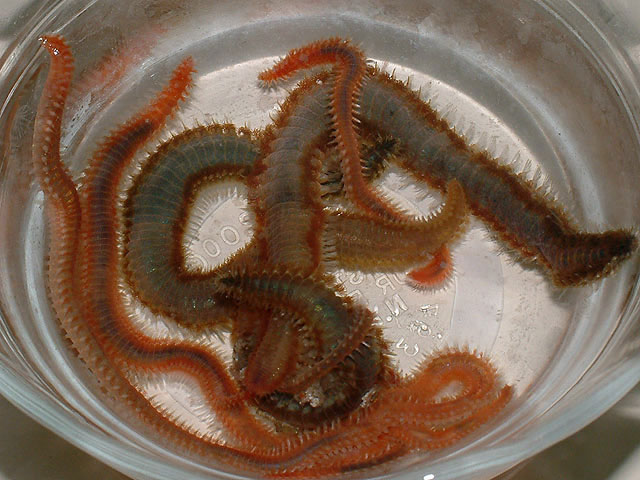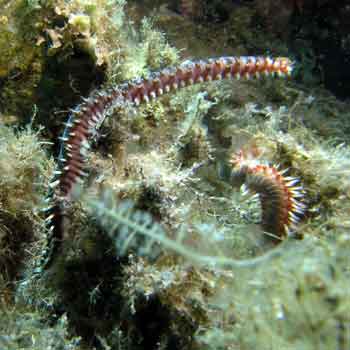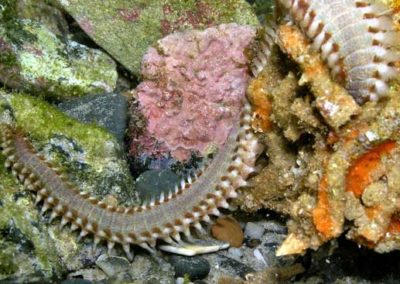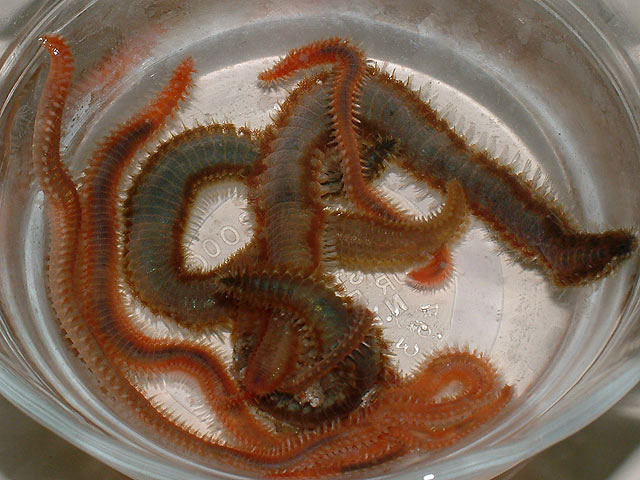Introduction to Bristleworms:
Bristleworms is loosely used to describe all Polychaete class marine worms. It is the Pherecardia, Hermodice, and other related species that most aquarists need to be concerned about.
These species are also known as Fireworms because they have toxic bristles on their bodies that can inflict a sting. Fireworms are carnivores that can devastate a reef aquarium. They are not selective about what they eat and may also eat small fish.
It is advised to wear gloves when dealing with Fireworms to avoid coming into contact with their stinging bristles.
Not all bristleworms are bad.
Some help maintains healthy sand beds.
It can be very hard to tell the difference between “good” bristleworms from “bad” fireworms. If in doubt, throw it out.
What Bristleworms looks like:
Similar to an earthworm with bristles.

Signs of infestation:
Viewing bristleworms in your aquarium.
Life Cycle of Bristleworms:
Polychaetes reproduce sexually. Once the eggs reach maturity, the female will release them into the water by rupturing her body, which quickly results in her death.
Prevention:
A quarantine tank is the easiest way to prevent these ugly little reef critters from destroying your reef tank. Ideally, corals and live rock should be left in quarantine for 3 months. During the quarantine time, you should view the coral and live rock on a daily basis at night and watch for bristle worms.
Bristleworms like to stay hidden in the sand and rocks.
They typically come out when the lights are off.
Whether or not quarantine is an option, a dip in CoralRx is highly suggested.
Treatment:
Treatment should be done in a quarantine tank.
- The first step is to move the affected corals to a quarantine tank; the quarantine tank should have good light and water flow.
- Next, take your coral out of the main tank and dip it in Coral Rx.
- While the coral is in CoralRx take a turkey baster, and blast the coral with the dip. Making sure it is getting in between the polyps and the underside of the coral. Do this for approximately 5 – 10 minutes.
- After 5 – 10 minutes, remove coral and discard the coral dip. Do not reuse the coral dip as parasites may release toxins.
- Rinse coral with clean saltwater and return to a quarantine tank.
- Repeat every 4-8 days till no more bristleworms are found. Leave the coral in your quarantine system for an additional 3 months before moving back to your aquarium. An arrow crab and wrasses are a natural predator that maybe helpful in eradicating these pest.






